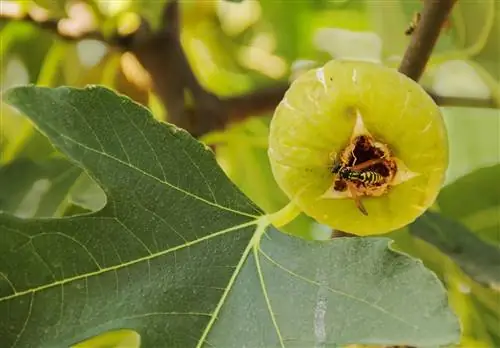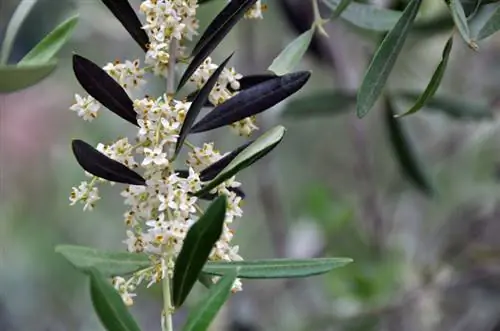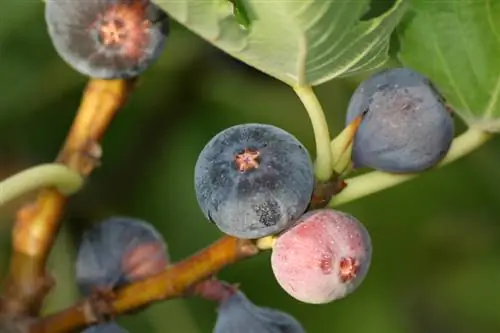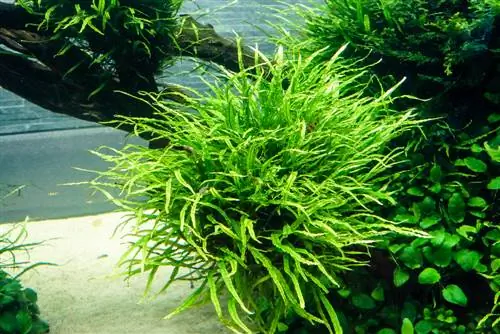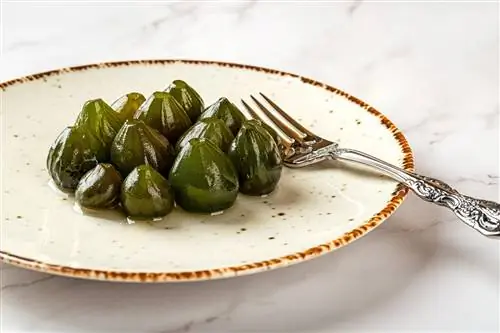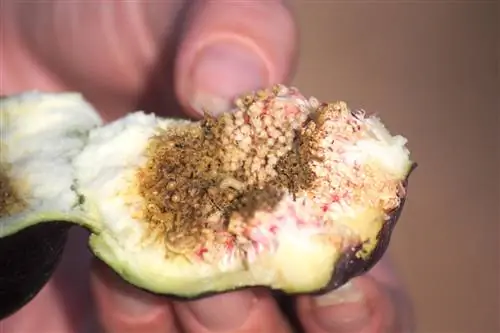- Author admin [email protected].
- Public 2023-12-16 16:46.
- Last modified 2025-01-23 11:22.
You will look in vain for blossoms on the fig tree. The mystery of the missing fig blossoms is solved here. You can find out how the fertilization of a fig takes place here.
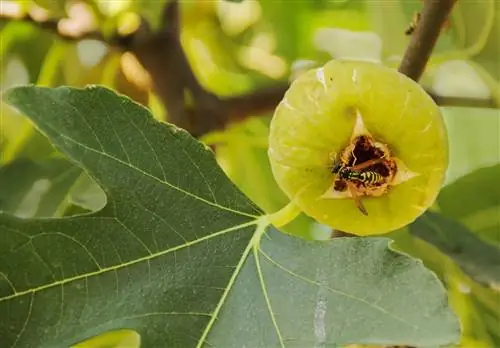
How does fertilization occur on the fig tree?
For fertilization, thefig gall wasppenetrates through an opening in the fig fruit base to theinner inflorescence By laying her eggs, the female wasp fertilizes at the same time the individual flowers. As a result of this symbiosis, fertilized inflorescences transform into figs within five months.
Where are the flowers on the fig tree?
The inflorescence of a fig (Ficus carica) consists of numerous individual flowers and is locatedinside in the young fruit base. This inconspicuous, green fruit base has not yet been fertilized.
The actual process of fertilization on the fig tree is something very special. At the upper end of the pitcher-shaped fruit base, a tiny opening can be seen as an entry gate for pollinators to the individual flowers.
Which pollinators fertilize the flowers on the fig tree?
Pollinators of fig tree flowers areFig wasps(Agaonidae), an insect family with 35 genera that are predominantly native to Southeast Asia. Thefig gall wasp (Blastophaga psenes) is the only European wasp species in this country that takes care of the pollination of fig tree flowers.
For a fig tree to bear fruit, it enters into asymbiosis with its pollinators. The female fig gall wasp penetrates the opening into the inner inflorescence, lays her eggs there and fertilizes the flowers at the same time. After successful pollination, the fertilized inflorescence turns into a fig within five months.
Are there self-pollinating fig tree varieties?
There are numerous self-pollinating fig tree varieties for growing your own figs in the garden and on the balcony. These premium varieties are hardy and do not require pollinators:
- Brown Turkey: Growth height up to 4 m, particularly hardy, bears twice.
- Rouge de Bordeaux: growth height up to 2.50 m, hardy down to -15° Celsius, produces blue-violet figs with garnet-red flesh.
- Bornholm fig: growth height up to 3.50 m, hardy down to -12° Celsius, produces juicy, sweet figs in August and September.
- Little Miss Figgy: high-yielding pot fig, growth height up to 90 cm, wine-red figs with strawberry-red, sweet flesh.
Tip
Proper fertilization promotes abundant fruit production
A balanced supply of nutrients provides your fig tree with the energy it needs for a bountiful harvest. From May to August, add a liquid fruit tree fertilizer (€12.00 on Amazon) to the irrigation water in the bucket every week with an ideal nitrogen-phosphate-potassium composition of 12% - 5% - 24%. It is best to fertilize a garden fig in April and June with compost and horn shavings.

